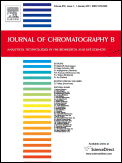
“Endocannabinoids and cannabinoid receptors are expressed in various central pain modulation regions. They maintain in dynamic changes in the expression level and distribution under different pathological and physiological conditions. These changes possess advantage as well as disadvantage. Exogenous administration of endocannabinoids exerts analgesic effect in different pain models, which is mainly mediated by the cannabinoid CB1 and CB2 receptors. Inhibition of enzymes for degrading endocannabinoids in different pain models also shows analgesic effect due to the increased local levels of endocannabinoids.”








